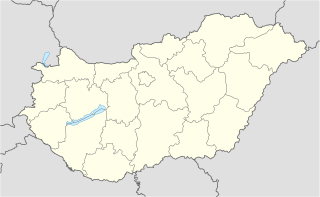Abaligeter cave
| Abaligeter cave
|
||
|---|---|---|
|
The part of the cave accessible to visitors |
||
| Location: | Mecsek , Hungary | |
|
Geographic location: |
46 ° 8 '25 " N , 18 ° 7' 0" E | |
|
|
||
| Type: | Stalactite cave | |
| Discovery: | 1768 | |
| Lighting: | electric | |
| Length of the show cave area: |
950 m | |
The Abaligeter Cave (also called Paplika ) is a famous stalactite cave near the village of Abaliget in the Hungarian county of Baranya , northwest of Pécs . It was discovered in 1768 and has been a nature reserve since 1941.
The cave consists of an entrance cave 5-6 m wide, 38 m long and always 3/4 m high filled with water, under which an ice-cold brook flows from a crevice, and the inner, 950 m long main cave with wonderful stalactite formations . Steps carved into the rock, remains of walls, human and animal bones as well as a Roman urn burial site suggest that the cave was already inhabited in ancient times.
fauna
41 different bat species can be found in the cave, 19 of which are permanently living in the cave. Form the backbone of the small and the greater horseshoe bat , both for decades on the Red List of endangered species. The bat population in the cave has been scientifically studied since 1923.
literature
- Georg Claus: Contributions to the knowledge of the algae flora of the Abaligeter cave . In: Hydrobiologia . tape 19 , no. 2 . Springer Netherlands, February 1962, p. 192-222 , doi : 10.1007 / BF00146362 .



